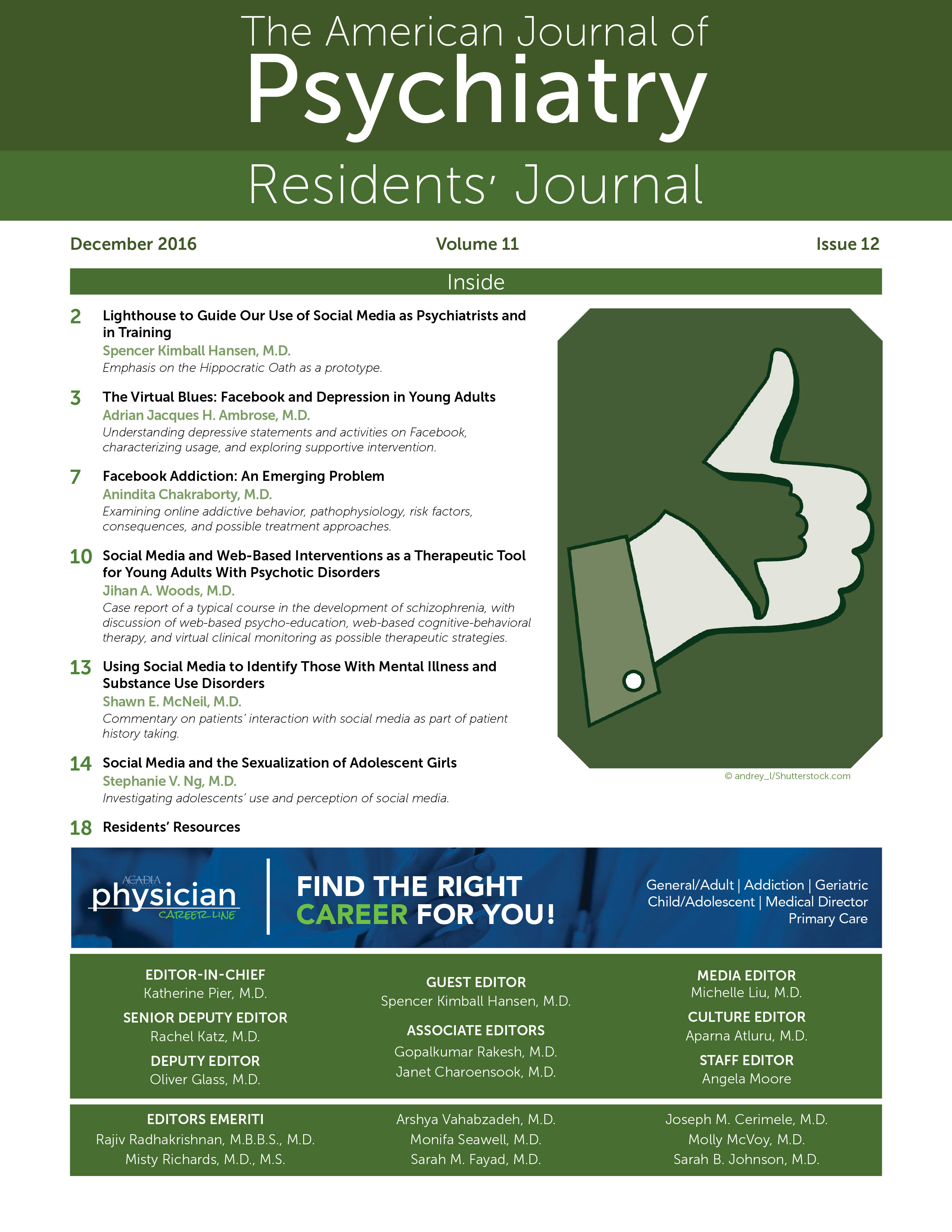The increasingly invasive nature of modern social media platforms presents a unique opportunity for identifying individuals at risk for mental illness. Social media allows individuals to create material and to choose with whom they wish to share it (
1). Like scenes leaping to life from the pages of A Midsummer Night’s Dream, the drama and passion in the lives of today’s youths (and a growing number of adults) seem to jump from the edifices of their digital selves. These ideas, statements, links, and photographs sent out via social media comprise the digital persona of any given person.
Social media presents a unique platform for identifying and interacting with persons suffering from mental illness. Computer algorithms can scan online profiles, seeking out the digital signs and symptoms of mental health issues. For example, DrugAbuse.com examined over 3 million posts on the social media site Instagram that were related to various music festivals and examined them for references to drug use. It found that 43% of posts about the Electric Daisy Carnival contained references to ecstasy (methylenedioxymethamphetamine), and 82% of posts about Marley Fest contained references to marijuana (
2). The direct correlation between music festival attendance and substance use disorder is a premature conclusion. However, the association may justify the use of targeted advertisements for substance use disorder treatment programs toward this population.
Crisis Text Line is a crisis intervention service that connects individuals struggling with problems such as suicidal ideation, addiction, sexual abuse, and eating disorders with counselors, who field their text messages and help them navigate difficult situations. Data from the millions of texts received reveal trends that could be used to predict the likelihood of certain behaviors among persons reaching out for professional help. Thirty percent of texts this service receives are about suicide and depression. Language used in the texts may correlate with certain behaviors such as substance abuse or self-injurious activity (
3).
Although social media can be used to reach out to those with mental illness, we know that technology can also exacerbate crises. The “Werther effect,” also referred to as “contagion,” is a term describing the genesis of suicidal behavior spawned by media reports (
4). This is an interesting phenomenon that should be addressed when clinicians are screening patients for suicide risk. Social media will affect the majority of our patients, such that we should hope to clarify its role as part of our social history taking.
As mental health clinicians, we need to be aware of the connection between social media and human behavior. Scientists should be able to harness the predictive potential of these technologies in identifying those most vulnerable. We should seek to understand the significance of a patient’s interaction with social media when taking a thorough history. Future research should focus on the development of advanced algorithms that can efficiently identify the highest-risk individuals. Additionally, research into the effectiveness and appropriateness of various interventions should be done to guide clinicians and public health officials in finding the best way to engage these patients.
Acknowledgments
The author thanks Spencer Hansen, M.D., for insightful guidance on this commentary.
